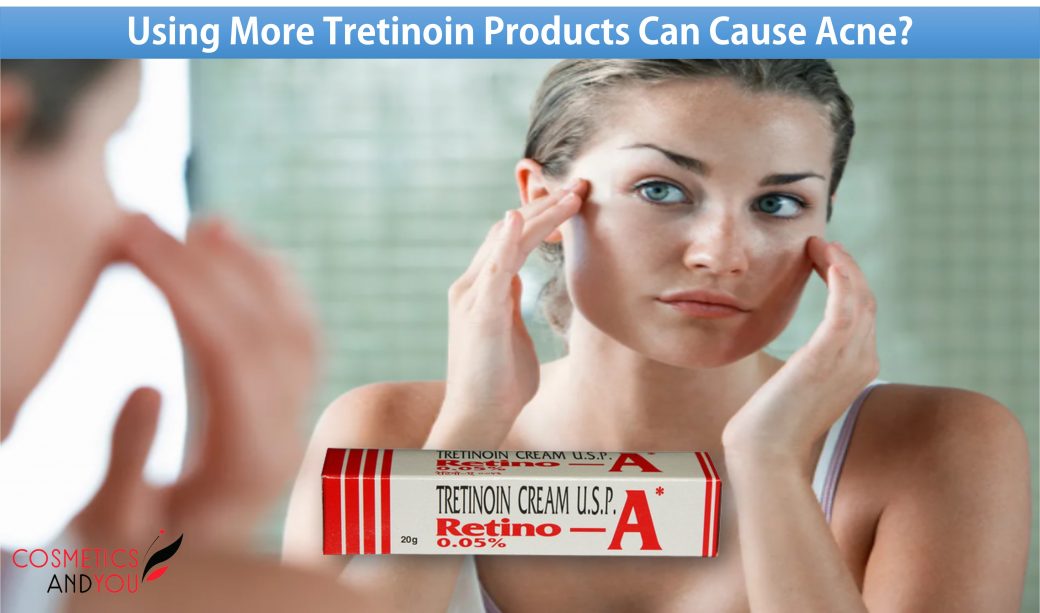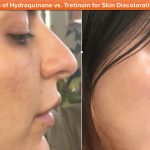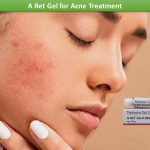According to research studies, tretinoin can effectively treat acne. However, some people, including pregnant and breastfeeding, may wish to use similar medicine that treats acne with fewer harmful side effects.
This article will help you know about tretinoin, its effectiveness, side effects and other complications associated with its long-term use.
As one of the most popular topical retinoid formulations, tretinoin has a great safety profile. However, as with all pharmaceuticals, this skincare agent has several side effects that you should be aware of before using the cream or gel preparation.
Tretinoin is commonly sold as topical cream or gel preparation. The topical form is intended for use as acne and anti-ageing therapy. The list of side effects below focuses on the topical form of this skincare agent used to treat acne vulgaris and the physical effects of ageing. Let’s check the common side effects of the retinoid medication that you may experience while using it or with its excessive usage. You should also be aware of the less common potential side effects of this formulation.
Common side effects of Tretinoin
Overall, tretinoin is an extremely effective and safe pharmaceutical agent with few side effects. Most users do not experience side effects; as per research studies, cream and gel solutions have a low incidence of reported adverse reactions. The trick is learning to use the preparation properly and effectively while lessening the gravity of these potential side effects. Commonly reported side effects are redness of the skin, abnormal skin peeling, and increased sensitivity to sunlight. Most of these are common during the first two to six weeks of usage. This is a period many users refer to as the tretinoin purge or adjustment period. During this time, your skin is more likely to feel irritated and peel as the medicine gets to work, preventing acne.
Tretinoin Usage
Applying excessive amounts of tretinoin cream or A-ret gel onto the skin to make acne resolve faster will not work. This can cause worsening of the skin causing redness, dryness, or peeling. It may take up to six weeks of tretinoin therapy to see results. It is important to use sunscreen, especially in the summer season. Exposure to the sun can worsen the peeling of the skin and other side effects.
The topical formulation is safe to use every day, but it often irritates some people. If you think regular use of tretinoin irritates the skin, you can reduce the application time by using it every alternative day until your skin gets adjusted. Using too much gel or cream solution at any time can irritate or may cause worsening of existing acne, so it is always important to apply only recommended amount each time you use it.
Even though the topical retinoid is a strong medication, it’s generally considered safe and effective for long term use. For most people, results appear within four to six weeks and will continue to appear for as long as they use it. While tretinoin can diminish some dark spots and discolouration, also, acne can come back after discontinuing the treatment. Tretinoin is only effective in treating the symptoms of acne vulgaris. It is not used to cure what’s causing acne or change how an individual’s skin responds. Every individual responds to the medication a little bit differently.
The amount of time an individual needs to use this topical medicine will vary from one individual to another. A dermatologist is the best person to ask when to start or stop taking tretinoin.
Conclusion
Excessive use of tretinoin cream or gel solution can cause skin irritation, so it is important to use less of the topical formulation each time you apply it. To reduce dryness and peeling, apply the cream to clean skin, followed by a moisturizer. It is nice to use it under a dermatologist’s supervision to experience the best results.





